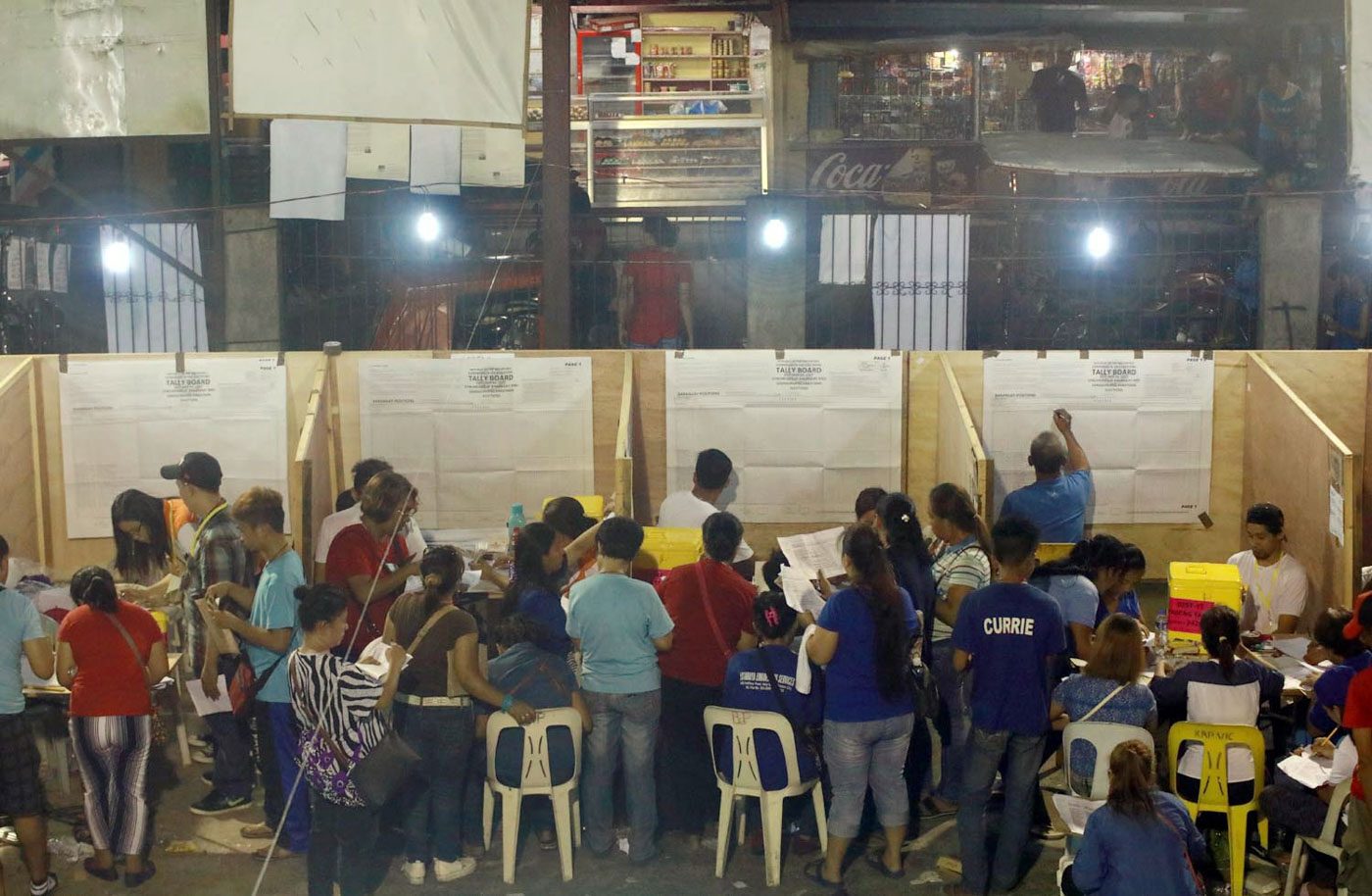SUMMARY
This is AI generated summarization, which may have errors. For context, always refer to the full article.

MANILA, Philippines – As Edjar Baladjay read aloud the names that voters from Barangay Mariana in New Manila, Quezon City, wrote on their ballots, a colleague drew sticks across the names written on the election form mounted on the wall.
It’s been awhile, but the counting sticks were back during the barangay and Sanguniang Kabataan elections on Monday, April 14.
The Philippines had shifted to automated counting since 2010, but the barangay polls were the exemption.
Baladjay, who served in 6 manual polls by his count, missed the PCOS machines that automated counting. It’s a sentiment shared by Charlie Dauag and Nimfa Narcise, who also served in New Manila and Caloocan, respectively.
WATCH: Manual counting of votes in barangay Mariana in New Manila, Quezon City. What do you think? Do you prefer it automated? #BSKE2018 @rapplerdotcom #PHvote pic.twitter.com/sC5PNDuO8h
— Carmela Fonbuena (@carmelafonbuena) May 14, 2018
“With automation you only press a button after the votes are cast. You don’t have to write all these things anymore,” Balajay said in Filipino.
“If it’s automated, you don’t have to think about much else. The machine will do it all. If it’s manual, you have to take care of everything,” said Dauag, speaking in Filipino.
Under automated voting, Filipino voters shade ovals across a candidate’s name instead of writing the names of their preferred candidates. They then feed their ballots onto the PCOS machines. When the polls close, election inspectors only need to press a button. The machine does the rest – counting the votes and sending the results to a server.
But manual elections isn’t all that bad. There are a few things some teachers do like about manually counting votes using sticks: the tara system.
Baladjay and Narcise said they liked that they could guarantee themselves that the count was accurate instead of blindly relying on the machine.
“I do the counting or witness it, unlike with automated [process], where I cannot vouch for the results myself. I’m not the one who computed. I didn’t do the tally,” Baladjay said.
Narcise said the same thing.

To be sure, no method guarantees smooth-sailing operations for teachers and voters. There are problems that persist whether the elections are automated or manual.
“Manual man o automated, may mga problema naman. Kagaya nito, hindi mahanap ang pangalan (Be it manual or automated, there are problems. Like this one, we can’t find the names of voters,” said Victorino Virtucio, a volunteer for the Parish Pastoral Council for Responsible Voting.
There’s one reason manual count is still preferred by some: poor to zero internet connection in remote areas.
“Dito sa Nagpayong, mahirap ang signal ng Smart at saka ng Globe. ‘Yung Smartmatic nagkakaproblema ng transmission sa mismong precinct. So para sa akin, mas madali ang manual,” said Rhea Bernal of Nagpayong Elementary School in Pasig City.
(Here in Nagpayong, cellular signal is weak for Smart and Globe subscribers. Smartmatic encounters problems when they transmit results from precincts. That’s why, for me, it’s easier to do it manually.) – with reports from Ralf Rivas and Camille Elemia/Rappler.com
Add a comment
How does this make you feel?
There are no comments yet. Add your comment to start the conversation.